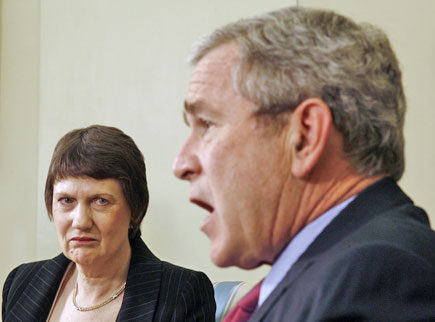The tip of the Otago Peninsula is just 45 minutes drive from Dunedin centre, and its attraction lies primarily in the wildlife that inhabits it. The stars of the show are the rarest of all penguins - the yellow-eyed penguin - which has a small colony on the peninsula. The private company that owns the land and organizes tours has built a series of camouflaged trenches and observation huts to allow close viewing of these very unsociable creatures. But before we turned up at our booked toured, we went to the very tip of the peninsula to visit the albatross centre.
I've never seen an albatross, and I was looking forward to seeing for myself their 2m wingspan. When we inquired at the centre, we learned a few things: firstly, we probably wouldn't see any albatrosses that day as they were out to sea, feeding; secondly, if we wanted the tour, which included seeing an albatross chick, it would cost us more than NZ$200 for the family. I was not happy. The penguins were already coming in at about NZ$250, and we had already baulked at paying over NZ$100 to see the mansion home of one of New Zealand's richest men of the 19th century. Uluru was still weighing on our minds and budget. We left the centre after reading interesting information about how longline fishing was reducing their numbers, but how cooperation between fishermen and environmentalists resulted in a few simple techniques that protected albatrosses while improving fishing catches.
We walked along the clifftop to see whatever nesting birds were there, and perhaps see a southern fur seal if we were lucky. After 10 mins, our luck proved to be better than we could have hoped for - a free albatross. A lone bird glided in along the cliffside, then circled the hill that sits in the centre of the sanctuary. It soared in and out of view, and made a spectacular sight for the dozen or so of us that picked the right time to wander outside, though we never managed to get a photo.
With a free albatross, our karma was in credit, but Penguin Place - the private sanctuary for the rare Yellow-eyed Penguin - looked like it was going to to balance the books. We were all keen to see these creatures waddling in that ridiculous but adorable way along the beach, as the brochures portrayed. It was only after we paid the hefty fee, watched an introductory Attenborough video and sat in the little lecture room for a talk on what makes Yellow-eyes so different and so rare, that it was pointed out to us that during this time of year these animals are out to sea fishing, only returning to their nests when they're full, and there were no guarantees that we were going to see anything.
Yellow-eyed penguins nest in whatever cover they can find near beaches. We were taken by rickety bus to the edge of their colony, and led through the aforementioned trenches to the beachfront observation post - a half-buried shack with a plank missing at eye level. There wasn't a penguin to be seen. There were about 20 in our group, staring eagerly out to see, waiting for a returning penguin to turn this visit into something other than the world's most expensive peep through a seaside letterbox. 15 minutes later, the only things waddling ridiculously along the beach were 20 or so sullen punters, making their way back to the bus.
Just before getting back on the bus however, we took a detour along the hillside overlooking the beach. Lo and behold lying in the grass in the distance was - apparently - a yellow-eyed penguin. It was only when the animal finally started to move around that some of us were convinced that it wasn't a taxidermist's 'backup' penguin. If the excitement of seeing our investment start to yield some return wasn't enough, our guide's walkie-talkie crackled in the news that there was a penguin on the beach too, just coming out of the water. Then another. Before we knew it, we had gone from zero to three (somewhat distant) penguins and a closeup southern fur seal (to, ahem, seal the deal you might say. Sorry. It's late. And Duncan's influence hasn't worn off yet even though he's now back in Sydney.)
So Penguin Place was saved a long chiding from irate customers about false advertising, thanks to the fact that two penguins had stuffed themselves with fish, and a third, that at first appeared to be stuffed, couldn't even be stuffed to get off his arse to go out and fish.
The next morning we were presented with Anzac biscuits by the landlady of the motel. We hadn't realised that Anzac Day - the occasion that Australians and New Zealander's remember their war dead - fell on the very day we were planning to explore the town. Almost everything was shut. Pity really - it looked like an interesting place. We did spend a fair bit of time in the Otago Museum, where amongst many other things there were excellent exhibits on the Maori people, and on Melanesians, Polynesians and Micronesians. I never knew there was such a place as New Ireland, but there it is, bold as brass, east of Papua New Guinea (in fact politically part of PNG) and sporting some specialised wooden carvings known as Malagan. Obviously some bugger somewhere thought it would be a jolly jape to name some unfortunate recipient of imperial hospitality after a country that had already had its fill of the same.
And on another politically uncomfortable note, the most noteworthy expression of solidarity with NZ soldiery that I saw on Dunedin on Anzac day was a blackboard set out on the Octogon (central feature of Dunedin) next to a huge poppy, that read "Thank you Helen Clarke for keeping our troops out of Iraq".


No comments:
Post a Comment